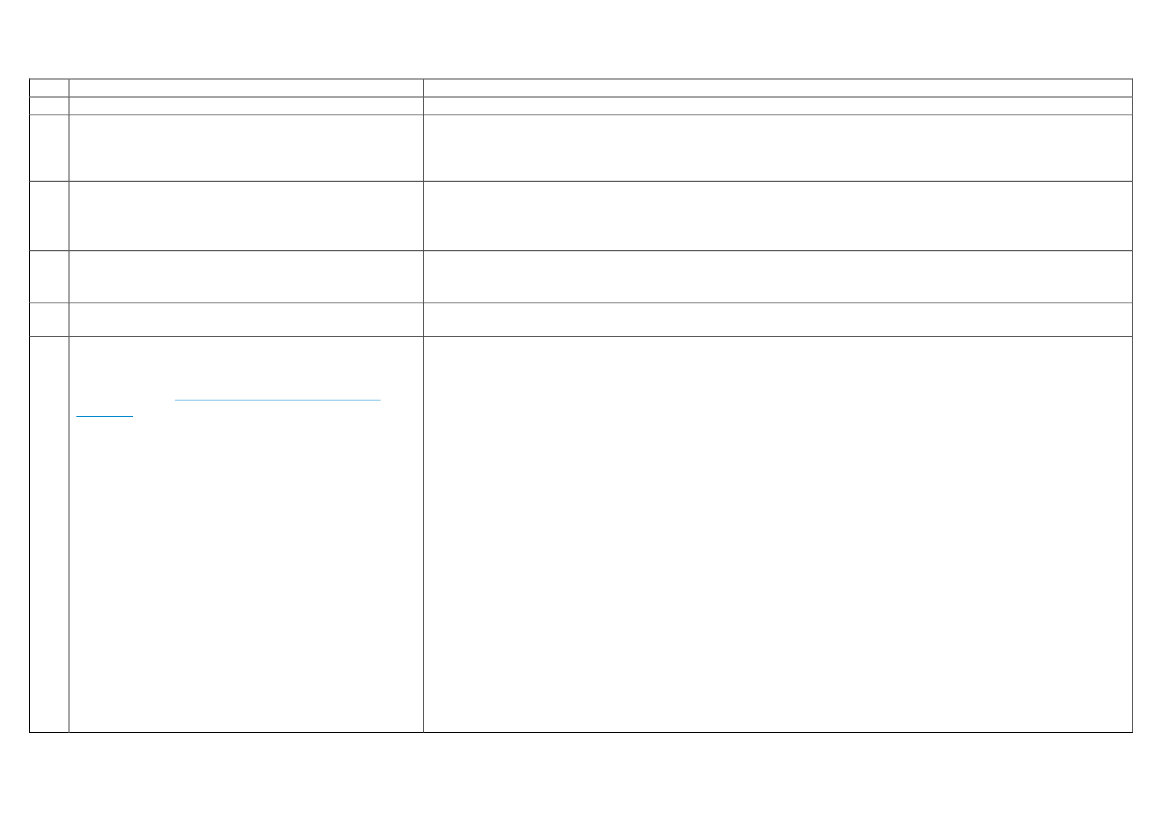
4. april 2016
Nr.
1
2
Spørgsmål
SE SEPARAT DOKUMENT
Are you aware of overlaps or inconsistencies among
the existing planning obligations in the same or
different areas of the energy and climate acquis?
Please provide examples.
Which of the current planning obligations could in
your opinion be streamlined[*] into one integrated
plan and why?
Are there any planning obligations that should be kept
separate from the integrated plan?
Are there any planning obligations that could be
repealed?
Which elements/articles of the current planning
obligations in the field of renewable energy do you
consider indispensable and why? If relevant please,
refer to specific
Articles of the Renewable Energy
Directive.
Svar
No answer.
3a
3b
3c
4
With regard to energy efficiency the planning obligations of the National Energy Efficiency Action Plans and Annual
Reports (NEEAP’s) could be integrated into one consolidated national plan on all planning obligations for energy. It
is, however, hard to estimate the efficiency gains from this. If such a consolidated report will contain the same
requirements as the NEEAPS’ requirements, the efficiency gains from this might be smaller.
In general, all planning relevant for the Energy Union should be integrated in order to minimize administrative costs
and integrated planning should also ensure that the Commission can keep track on the Member States’ efforts and
whether the EU is on track to reach the common EU-targets.
No answer.
In general it would be beneficial to streamline the reporting and planning obligations for renewable energy. In this
context, it is important to continue comprehensive planning and monitoring of national policies on renewable energy
deployment which should be integrated into the new national climate and energy plans.
Article 4 in the current Renewable Energy Directive stipulate that each Member State should adopt a national
renewable energy action plan. The national renewable energy action plans shall set out Member States’ national
indicative trajectories for the share of energy from renewable sources consumed in transport, electricity and heating
and cooling, taking into account the effects of other policy measures relating to energy efficiency on final
consumption of energy. The plans should also consider cooperation between local, regional and national authorities,
planned statistical transfers or joint projects, national policies to develop existing biomass resources and mobilise
new biomass resources for different uses.
It is important to continue the existing obligation to provide indicative trajectories for the share of renewable energy
in consumption as part of the national climate and energy plans. The trajectories should still reflect the shares that
are used in transport, electricity, heating and cooling. It should also be considered to include the gas sector – i.e.
biomethane injected into the natural gas system. The national as well as EU policy measures should be described in
the national plan and the effects of the national plans should be evaluated and transformed into projections for
renewable energy deployment. The projections made by Member States with guidance from the Commission will be
crucial for evaluating the level of ambition in the national plans and whether the binding EU target of 27 % share of
renewable energy consumption in 2030 is likely to be met.
The national plans should continue to include measures of regional cooperation and regional coordination should
play a more important role in the national plans for 2030.
1